SPRING
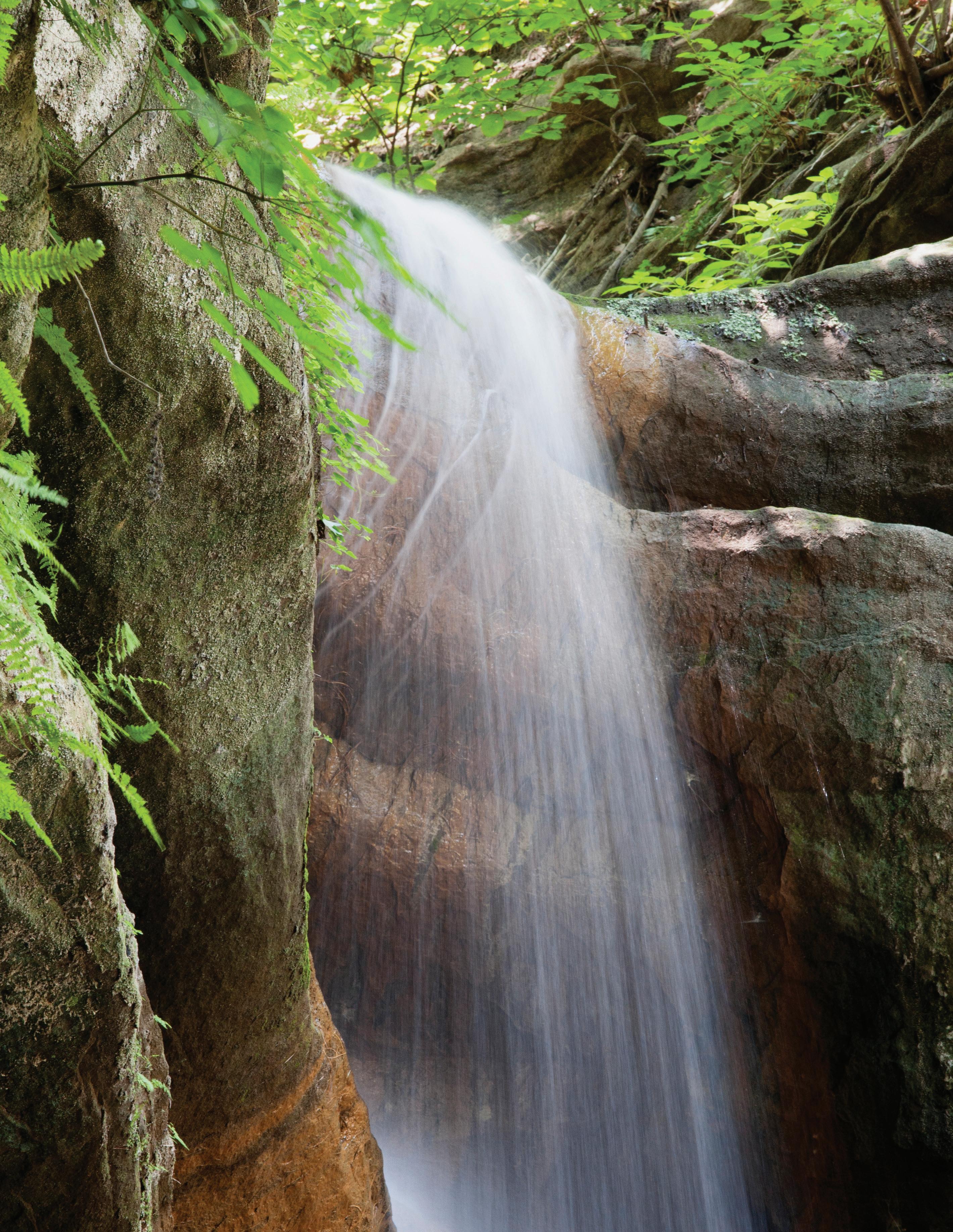
IN THIS ISSUE:
Bringing a Prairie Back to Life
Giving Rivers Room to Roam
Charles Larry, Photographer
Blue Bonds for Ocean Conservation 6 Conservation News in Brief
Using Science to Protect the Mackinaw River
Choose Native Wildflowers for Solar Arrays
2
3
4
5
7
7
2023
Board of Trustees
William M. Miller, PhD Chair
Mamadou-Abou Sarr
Vice Chair
Rebecca Gerchenson
Treasurer
Yvonne Bruce
Luis Gutierrez
Kunal Kapoor
Lydia Link
Ian McCutcheon
Brad McMillan
Pin Ni
Ann Suker Potter
Shari Rogge-Fidler
Alison Taylor
Matthew Walker
Karen Weigert
Donald J. Wuebbles, PhD
Trustees Emeriti
Philip D. Block IV
Lynne Dinzole
Lynn B. Donaldson
Peter H. Fenner
Christopher D. Gould
Elisha Gray
Ted Haffner
Ronald S. Levin
Ethan Meers
Richard E. Sparks, PhD
David L. Thomas, PhD
M. Jay Trees
Life Trustees
Harry W. Drucker
Constance T. Keller
Wendy J. Paulson
Brenda Shapiro
Nancy Hamill Winter
State Director
Michelle Carr
International Headquarters
Arlington, Virginia 703-841-5300


Bringing a Prairie Back to Life
Nachusa Grasslands Preserve can feel like a place that time forgot. Prairie grasses roll to the horizon, dotted by dark clusters of bison, and birds flit from stem to stem. More than 4,000 acres in size, this preserve in northern Illinois harbors 700 native plant species, 230 species of birds, 270 bee species, rare Blanding’s turtles and federally threatened prairie bush clover.
But it hasn’t always looked like this. When The Nature Conservancy purchased the nucleus of what is now Nachusa in 1986, it was agricultural land, hard-grazed prairies and oak woods. With the help of volunteers, we’re restoring it to the natural tallgrass prairie that was once there. The herd of 100 bison that roam Nachusa are part of the equation; they create wallows, fertilize the soil and graze, which stimulates plant growth.
Ecosystem restoration is a slow and laborintensive process. The work involves mowing and treating invasive shrubs with herbicide, scattering native seed and using prescribed fire to keep the land in balance and restore nutrients to the soil.
To accomplish this work, TNC relies on its volunteers. “They are a part of the Nachusa team as much as any paid staff,” says Bill Kleiman, Nachusa project director, who has spent most of his 30-year career restoring this special place. “We treat our volunteers as colleagues and give them the same training as if we hired someone on.” Organized through the nonprofit Friends of Nachusa Grasslands, the volunteers carry out physical labor, manage administrative duties, lead tours, plan the site’s “Autumn on the Prairie” festival and more.
One long-term volunteer and the president of Friends of Nachusa, Bernie Buchholz, manages a 50-acre parcel of prairie on his own. Under his stewardship, this former cornfield has transformed into a diverse and thriving prairie. Another volunteer, Paul Mellen, repairs broken machines, does light carpentry and maintains the preserve’s equipment.
Although it’s hard work bringing the prairie back, the task energizes volunteers and staff alike. “It’s a joy seeing the landscape become healthier,” says Kleiman.

prevented

2 ILLINOIS UPDATE 2023 SPRING
Volunteers are a key part of the work at Nachusa Grasslands.
cover: Waterfall at St. Louis Canyon, Starved Rock State Park, in LaSalle County, Ill. © Charles Larry this page: Volunteers show their seed harvest. © TNC/Dee Hudson
Printed on 100% PCW recycled, process chlorine-free paper, creating the following benefits: 52.8 trees preserved for the future 3,938.4 gal. waterborne waste not produced 7,579.6 lbs. net
gases
greenhouse
The Nature Conservancy is a private, nonprofit 501(c)(3) international membership organization. Its mission is to conserve the lands and waters on which all life depends.
The Nature Conservancy meets all of the Standards for Charity Accountability established by the BBB Wise Giving Alliance. The BBB Wise Giving Alliance is a national charity watchdog affiliated with the Better Business Bureau.
Giving Rivers Room to Roam
Natural solutions can handle flood risk in a changing climate.

One of our greatest resources in Illinois is our abundant freshwater. Our rivers supply water for agriculture, cities and towns, industry and wildlife. But when they flood, they’re a reminder of nature’s power and unpredictability. And lately, the floods have been bigger and more destructive, especially on the Mississippi and its major tributaries.
“The truth is, the river is different,” says Bryan Hopkins, director of freshwater conservation at The Nature Conservancy in Illinois. “We’re seeing higher flood risk and stronger pulses.” In the last 10 years, Illinois has experienced some of its biggest floods on record, events that swept away topsoil, drowned crops, damaged homes and cost lives.
The solution? Giving the river more room. One way of doing this is to move levees— originally constructed to contain rivers in narrow channels—back from the waterline. “After the 2019 flood on the lower Missouri River, one levee was so damaged that it was described as swiss cheese,” says Viv Bennett, director of protection and conservation strategies for TNC in Illinois. So instead of rebuilding in
the same place, the Army Corps of Engineers moved the levee back by about five miles. This allowed floodwaters to expand outward and diminish in force. TNC brought together partners for the project and purchased conservation easements on the land. The new location created a reconnected floodplain of over 1,040 acres with an additional 400 acres of new wetlands and restored habitat for three endangered species. Using this experience, TNC created a levee setback playbook that can guide similar projects throughout the region (available at nature.org/ MOriverlevee).
Another recent success is the 17,000-acre Dogtooth Bend peninsula in southwest Illinois, which was experiencing repeated floods. TNC worked with the federal Natural Resources Conservation Service to run a matching funds program that enabled the government to buy

conservation easements from landowners who were being flooded. The easements allow the owners to retain ownership while preserving the land for wildlife, recreation, improved water quality and myriad other benefits.
TNC also continues to work toward our 2030 goal of conserving a million kilometers of river, which is enough river length to wrap around the planet 25 times over. In addition, we lobby Congress to fund the national restoration program for the upper Mississippi River. “We are one of the major reasons that it has been consistently funded, so it can keep staff, keep up momentum and do multi-year projects,” Hopkins explains. TNC also provides technical input on managing water levels in the river, which are key to supporting vegetation growth and aquatic life.
Floods can be devastating, but there are ways to manage the risk. “It’s about handling flooding in a better way,” says Bennett. “Affected landowners are the first to tell us that the river has changed and it’s not going to go back. But, by adapting to the new conditions, we can help create habitat, improve water quality and help keep people out of harm’s way.”
nature.org/Illinois 3
FRESHWATER
View of multiple areas of the levee breach © USACE; Aerial view of flooding from the levee breach © 4 Route films
Charles Larry, Photographer
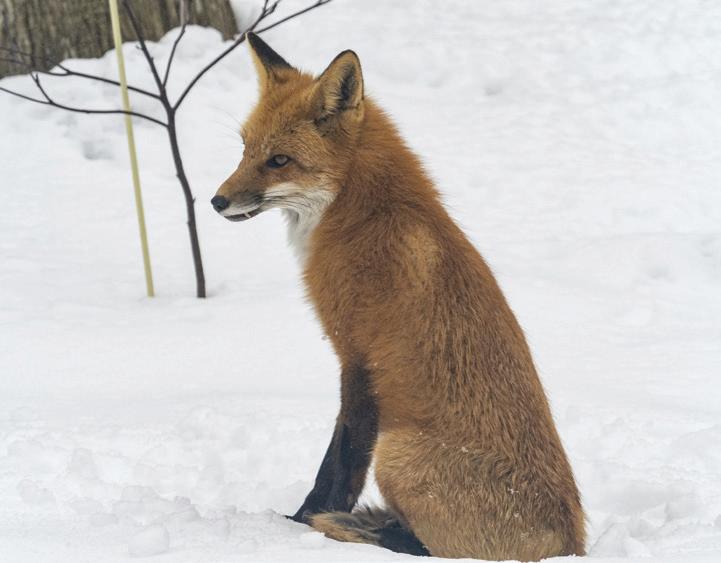
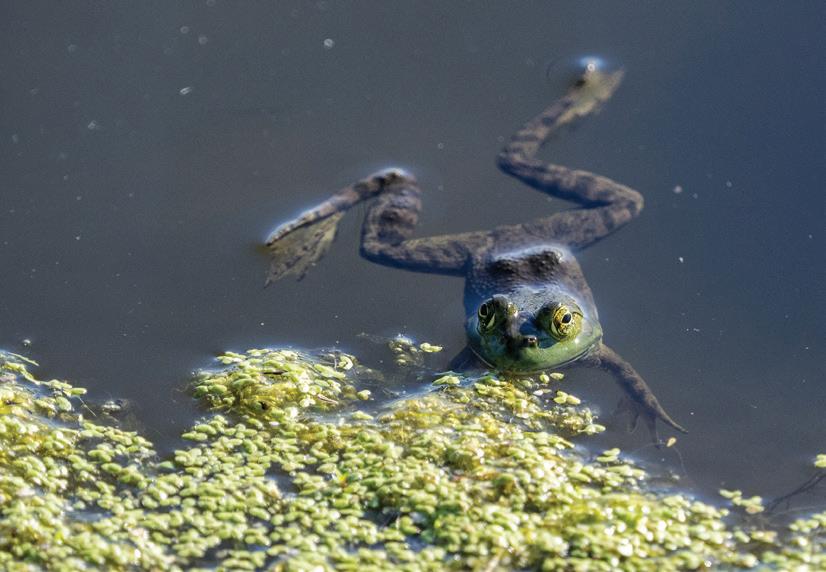
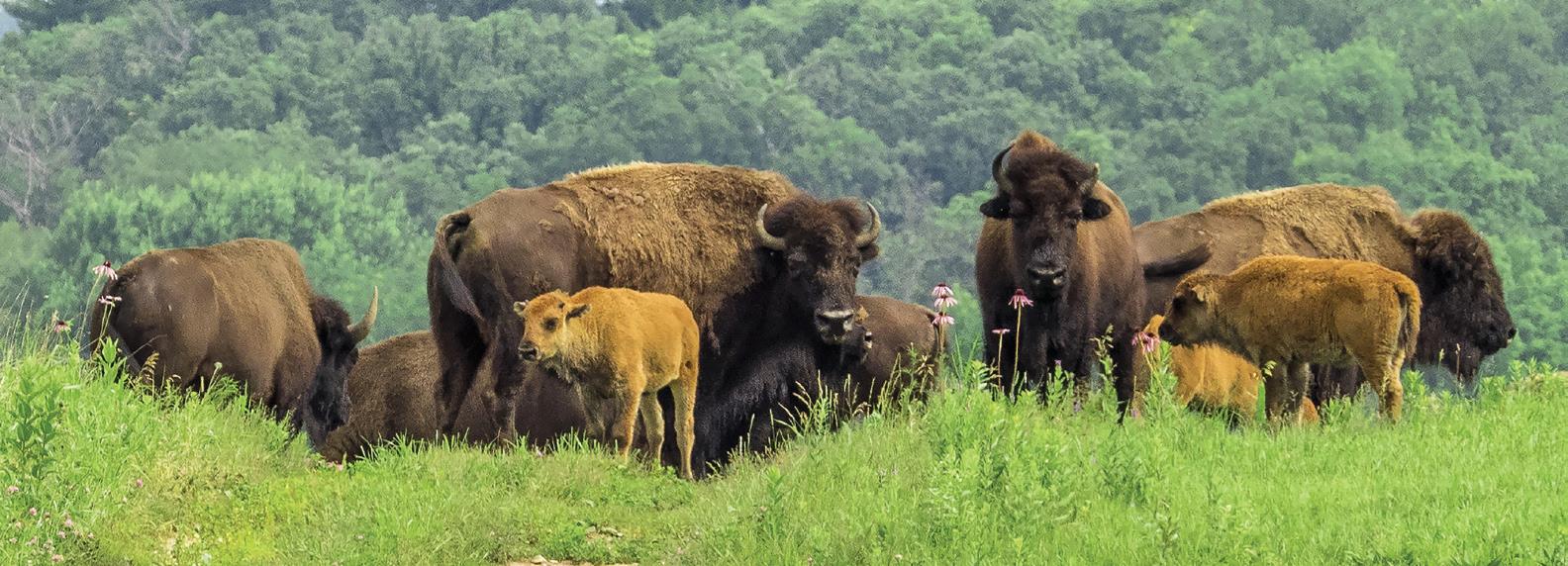
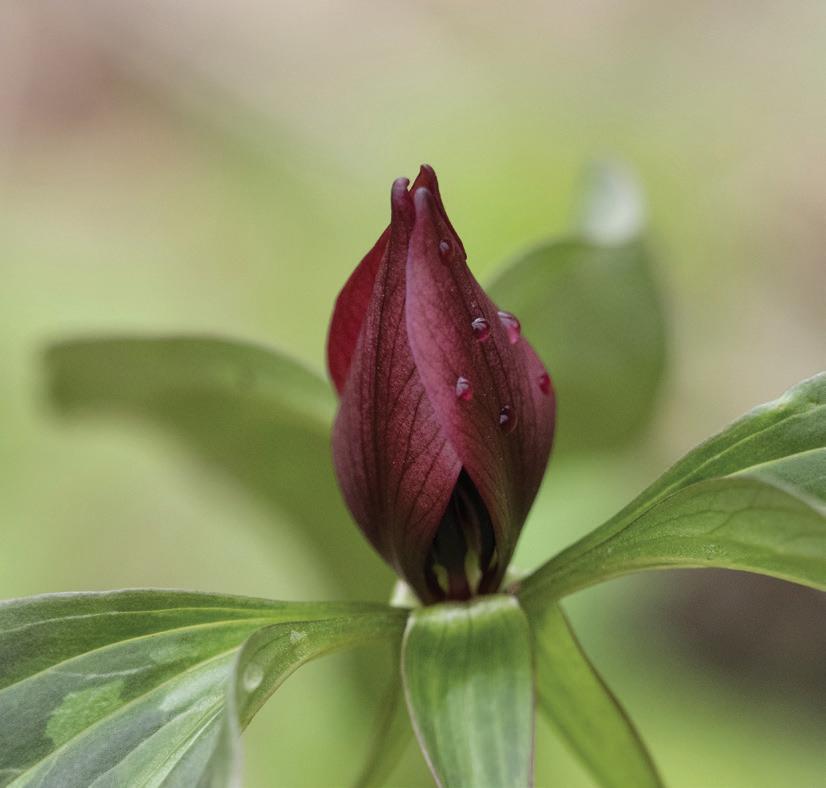

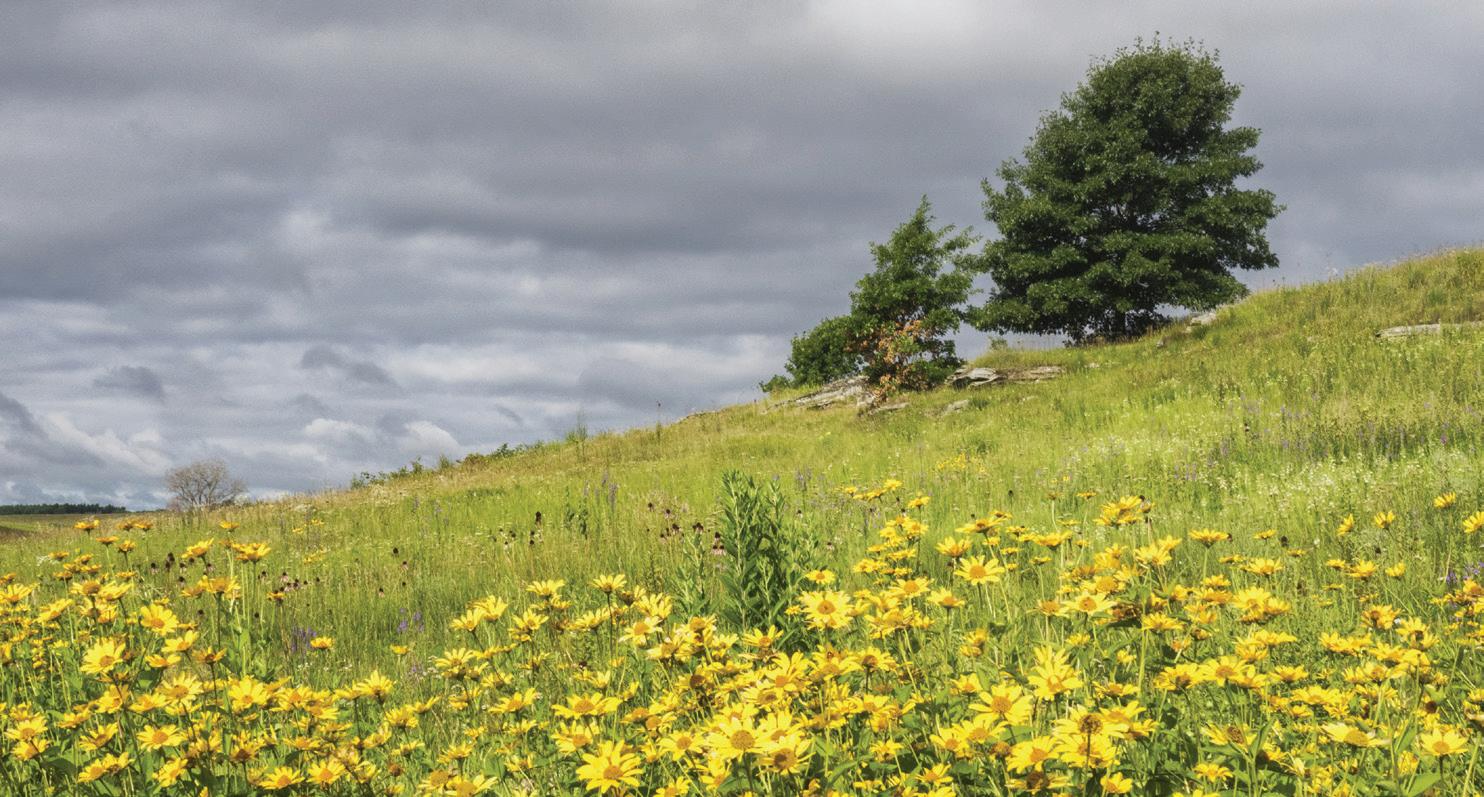
TNC would like to extend a hearty thank you to Charles Larry, professional photographer and friend of TNC. Larry captures and donates many of the stunning photos of Illinois nature that TNC uses. On these pages is a sampling of the gorgeous images that Larry has taken. “He’s out in the early mornings, when it’s really cold, trying to catch these moments of glorious light,” says Bill Kleiman, Nachusa project director. In addition to photographing nature, Larry and his wife Emmylou volunteer at Nachusa.
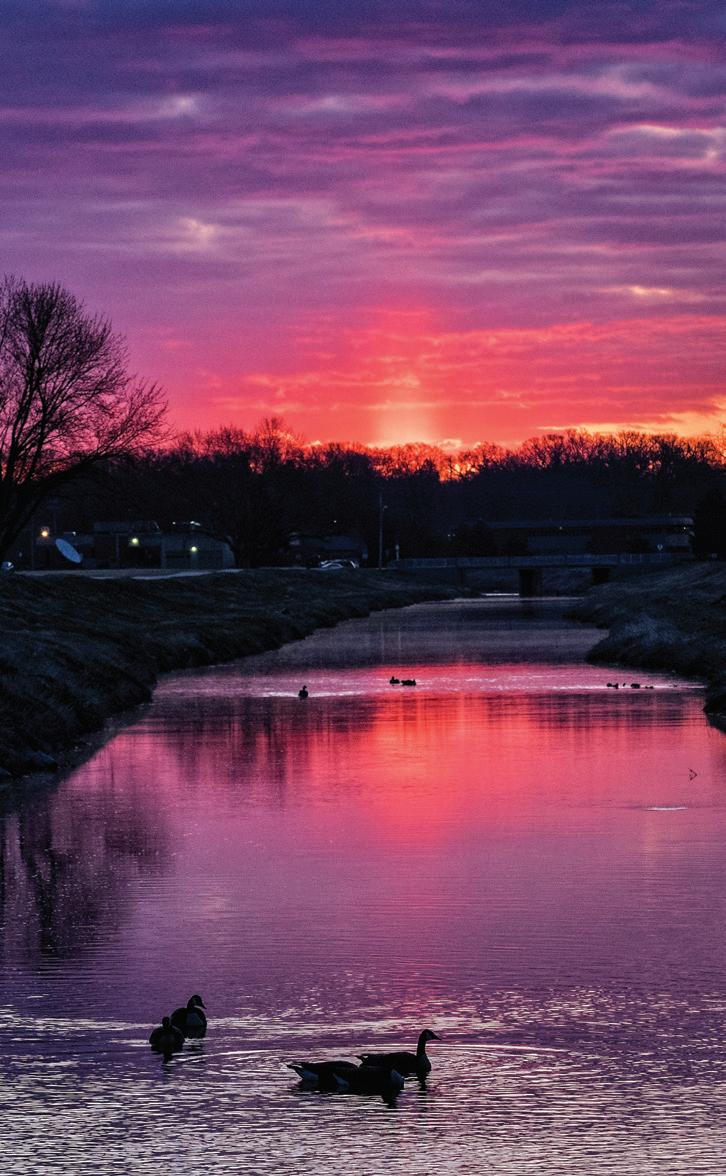
4 ILLINOIS UPDATE 2023 SPRING
THIS PAGE, left to right, from top: Wildflowers at Nachusa Grasslands Preserve. Red trillium (Trillium erectum). Sunrise on Kishwaukee River. A herd of bison with calves at Nachusa. Fox (Vulpes spp.) in snow. A frog surfacing by duckweed. NEXT PAGE, from top: Deer (Odocoileus virginianus) at Stone Barn Savanna. Mississippi Palisades State Park. A bumblebee (Bombus spp.) on a prairie blazing star (Liatris pycnostachya) in Nachusa. All photos © Charles Larry.
Blue Bonds for Ocean Conservation
A debt-for-nature swap in Belize can protect marine resources.

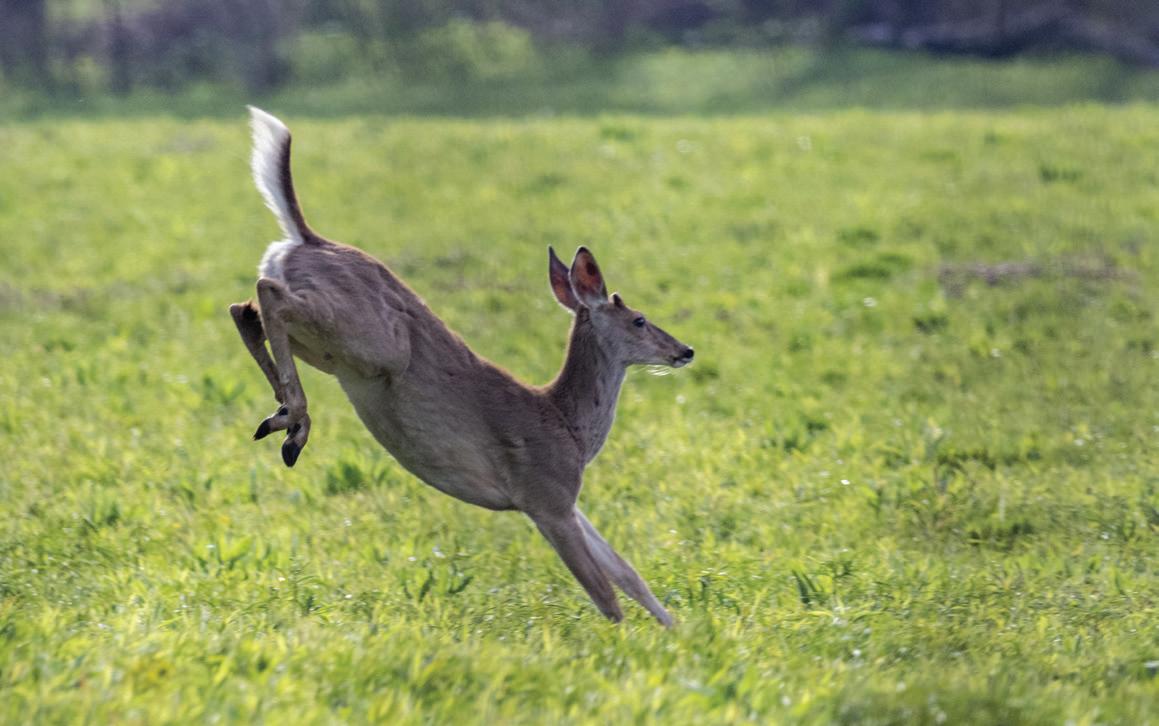
It’s a world away from the familiar fields and woods of Illinois, but off the coast of Belize, The Nature Conservancy applied our trademark ability to bring diverse partners together and spirit of innovation to achieve an important conservation victory.
Belize’s barrier reef is part of the larger Mesoamerican reef, which is the second largest reef in the world. The lapis lazuli waters are a diver’s paradise with abundant rich coral, over 500 species of fish and a shoreline fringed with lush mangrove forests and lagoons.
These stunning natural wonders are under pressure as Belize struggles to repay its massive public debt (which exceeds its GDP). With tourism down and limited funds available for environmental protection, the government sought a way to raise capital without destroying its resources.
Belize found the answer in a debt conversion program that TNC piloted called Blue Bonds for Ocean Conservation. Countries agree to protect at least 30% of their ocean resources in exchange for restructured debt agreements. Belize reaffirmed its environmental leadership by becoming the first country in the Americas to finalize a debt-for-ocean conversion—an investment in marine protection that’s unprecedented in scale.
“Nature is crucial for Belize’s economy, and we are proud to be partnering with the first country in Latin America to tackle these challenges using the Blue Bonds model,” says Julie Robinson, program director for TNC in Belize.

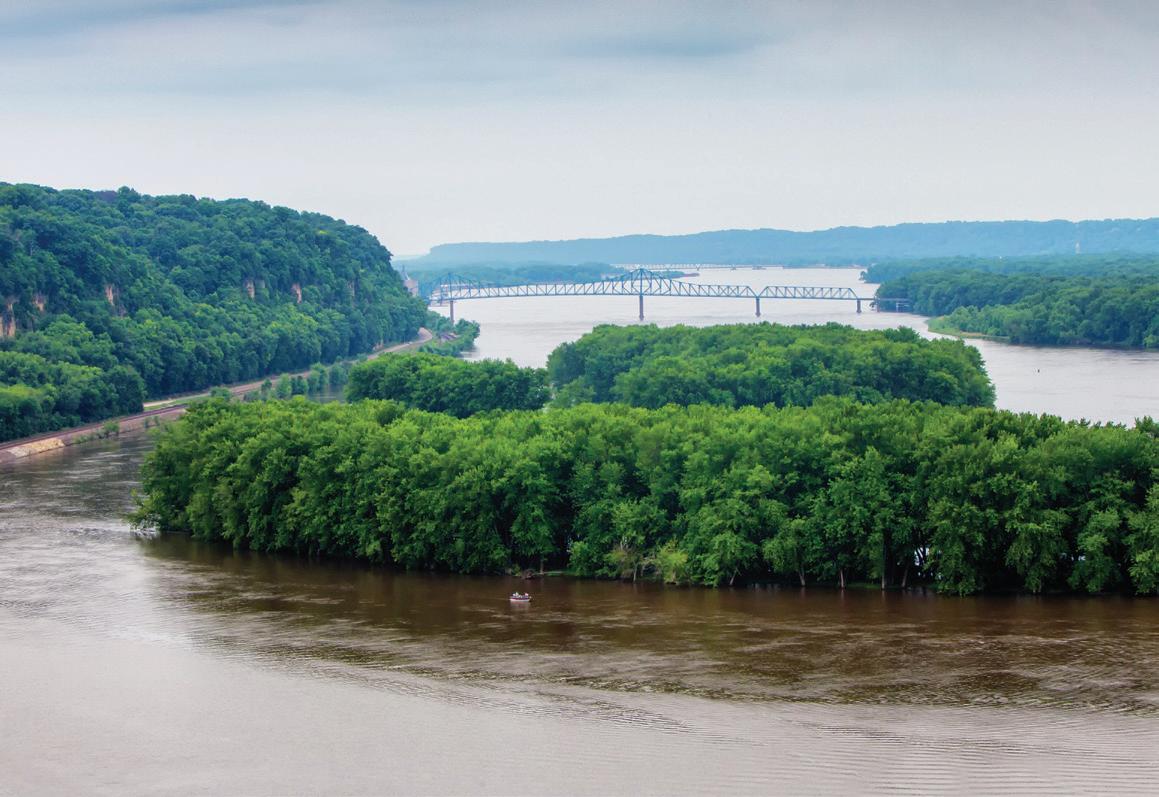
In November 2021, TNC succeeded in restructuring $553 million of Belize’s debt, working with a major international bank and the U.S. International Development Finance Corporation. Now that the principal on its debt has been lowered by $250 million, Belize has unlocked $180 million for marine conservation: good news for wildlife, tourists and residents alike.
Learn more about TNC’s Blue Bonds model at nature.org/bluebonds
nature.org/Illinois 5
Gorgonians beneath the clear water of Turneffe Atoll in Belize © Ethan Daniels
Urban Conservation Tackle air quality with Latinos Progresando


TNC partners with community groups in Chicago to support their efforts to improve environmental and human health in their neighborhoods. Starting last spring, TNC partnered with Latinos Progresando, as well as the Environmental Law & Policy Center and other organizations, to pilot an air quality monitoring program. To make the case for policy changes, trained volunteers collected data in Marshall Square, a neighborhood with particularly poor air quality. TNC is also collaborating with Latinos Progresando to add green elements to the central corridor, California Avenue, beginning with a project at a local school. “We’re using the Cook County Greenprint, a tool we developed that identifies priority areas for natural infrastructure, to help us focus our work,” explains John Legge, Chicago conservation director.
Fire Stewardship Prescribed Fires in April

At TNC preserves, controlled fires are set in spring. While fire is often viewed as a destructive force, scientists say the correct use of wildland fire can save money, protect lives and improve native habitat. TNC and our partners use fire to maintain landscapes that depend on it, like oak–hickory forests and grasslands. Fire keeps invasive species in check, allows native species to thrive, keeps woody shrubs from taking over grasslands, returns nutrients to the soil and stimulates many plants to blossom. “Right after a burn, people wonder, why did they do that?” says Ashley Maybanks, director of government relations at TNC in Illinois. “But within a few weeks, there are beautiful flowers popping up. The grass comes back almost immediately.” This spring, look for prescribed burn sites at our preserves and in state parks!
Lands and Water Vote Yes Success in Cook County
TNC is celebrating a big win: the passage of a referendum on last November’s ballot to fund the Forest Preserves of Cook County. The ballot initiative will generate approximately $45 million per year to care for the forest preserves. TNC co-led a coalition of over 160 environmental groups that advocated for this initiative, which proposed a miniscule property tax increase to support the forest preserves. Spanning 70,000 acres, the preserves contain the Chicago Botanic Garden and the Brookfield Zoo and receive over 62 million visits a year. This network of urban forests is critical for protecting Chicagoland’s biodiversity, absorbing floodwaters and providing heat protection as we ensure that the region’s more than 5 million people have access to healthy outdoor spaces.
6 ILLINOIS UPDATE 2023 SPRING
CONSERVATION NEWS IN BRIEF
Volunteers walk to Douglass Park to help monitor air quality. © Latinos Progresando; Lupine (Lupinus spp.), coming up after a burn in Nachusa Grasslands Preserve, Illinois. © Charles Larry; Funding for Cook County Forest Preserves will ensure that all residents have access to healthy outdoor spaces. © Jennifer Emmerling
Using Science to Protect the Mackinaw River
Years of research prove the value of constructed wetlands.
Over 20 years ago, The Nature Conservancy saw something special in central Illinois’ Mackinaw River watershed. This river is teeming with fish and mussels, and its high-quality tributary streams support native and migratory species. In recognition of the watershed’s exceptional value, TNC selected it as a priority conservation site and worked with partners to develop the Mackinaw River Watershed Management Plan in 1998.
At that time, the watershed was facing several stresses: alterations to the river’s hydrology, habitat degradation and reduced water quality. Since 2000, TNC has studied agricultural conservation practices designed to improve water quality, flows and fluctuation patterns. Led by Maria Lemke, director of conservation science for TNC in Illinois,
the team examines strategies like grassed waterways, reduced tillage, filter strips, winter cover crops and constructed wetlands.

One of the team’s long-term studies showed the importance of wetlands on farm fields. The findings showed that constructing small wetlands on the edges of fields was incredibly effective at reducing runoff of agricultural pollutants, like nitrogen and phosphorus, into rivers and streams. These wetlands also provide much-needed habitat for many freshwater plants and animals.
The next step is to scale up conservation in the watershed. TNC is developing the Mackinaw River Watershed Greenprint, an online tool designed to document real-time conservation, coordinate efforts,
Choose Native Wildflowers for Solar Arrays
Pollinator-friendly plantings can offer big benefits.
It’s a two-for-one deal: Growing wildflowers and other native prairie plants under and around solar arrays provides a range of environmental benefits, from hosting wildlife to addressing climate change. Native flowering plants can increase pollinator abundance in solar arrays by up to 30% compared with the conventional choice, turfgrass. They can help support species like the endangered rusty patched bumble bee and the iconic monarch butterfly. They also benefit soil and water quality, sequester more carbon and are easier to maintain.
But not all native prairie plants work well; many species grow too tall to fit under the panels. Raising the height of panels can significantly increase planting options and the resulting benefits.
To help land managers figure out the best approach, TNC and Pollinator Partnership created a guide called Greening the Clean Energy Transition:
identify new partnership and funding opportunities and ensure that areas of high biodiversity are protected. Caring for freshwater ecosystems, like the Mackinaw River, is part of TNC’s contribution to a global call to protect 30% of the planet by 2030.
Smart Siting and Pollinator-Friendly Solar Energy in Illinois. The guide lays out the benefits of combining pollinator-friendly plantings and solar energy installations, recommends the best species to plant and explains how to prepare and maintain the sites.

Solar energy is taking off in Illinois. New solar could impact up to 320,000 acres across the state by 2050. The new installations will help Illinois reach its goal of a 100% clean energy economy by 2050. Choosing the most appropriate sites for renewables and combining solar with native plantings can ensure that this ramping up occurs in an environmentally friendly manner. Read the guide at nature.org/ilclimate

nature.org/Illinois 7
TOP OF PAGE: Illinois State University (ISU) graduate student and summer technician Okiemute Commander (Coco) discusses project details with Joe Grant, a former ISU student and technician. Project lead Maria Lemke and Josh Tooley, a former TNC program manager, record data in the field. Both images © Krista Kirkham
MACKINAW RESEARCH
The Nature Conservancy in Illinois
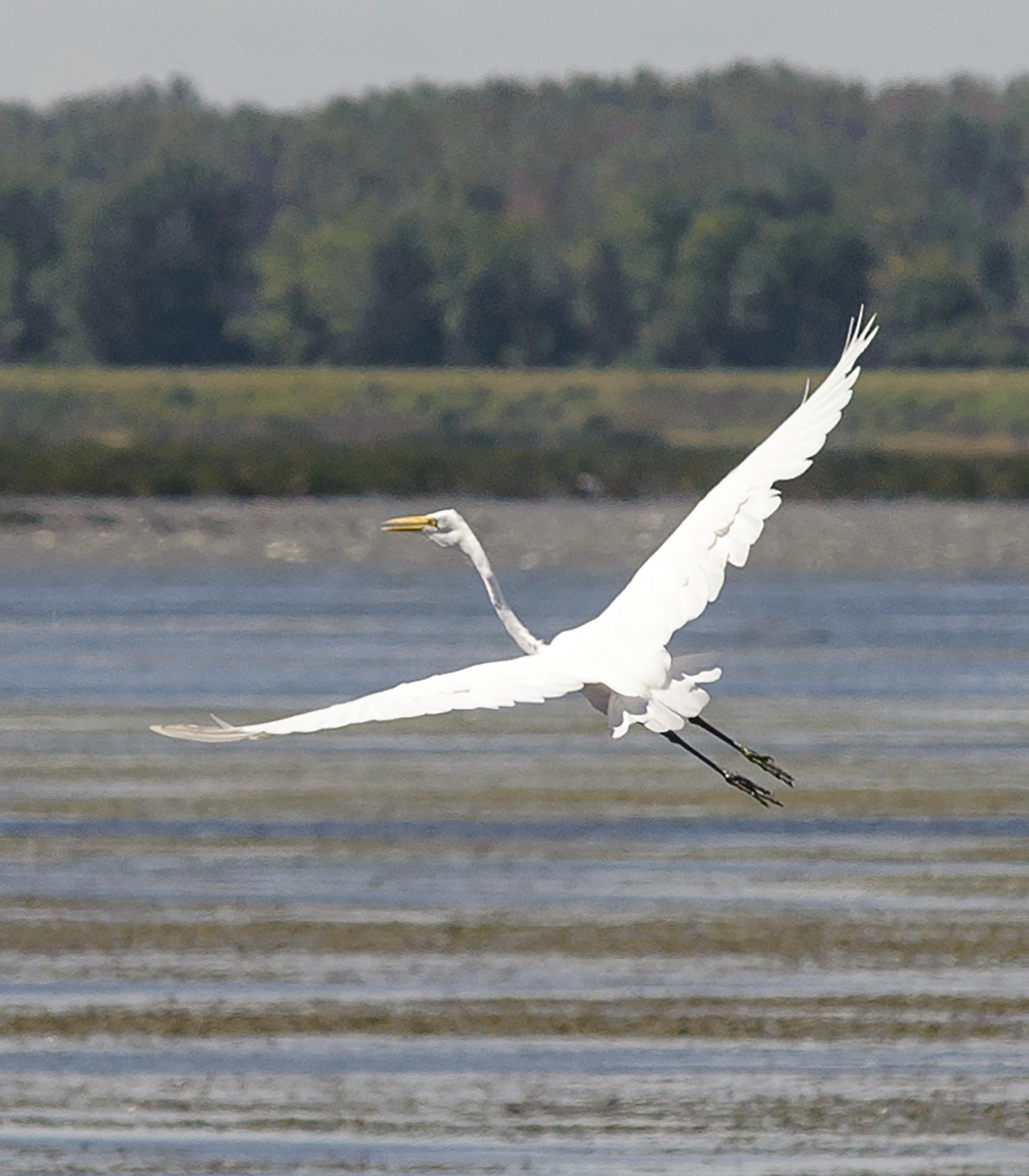
400 N. Michigan Avenue, Suite 1100 Chicago, IL 60611-4163
nature.org/illinois
SPRING 2023
facebook/TheNatureConservancyIllinois
twitter/@nature_IL
instagram/Nature_Illinois
Explore the Places We Protect
Spring is the perfect season to visit our Nachusa and Emiquon preserves! You might spot a baby bison at Nachusa. Or you could fish or canoe on the lakes and wetlands at Emiquon. You’ll also find migrating birds, spring wildflowers and other natural wonders in abundance at both preserves.
Learn what else is happening at Illinois preserves this spring at nature.org/Illinois.
NON-PROFIT ORG US POSTAGE PAID EUREKA, MO PERMIT NO. 40
























